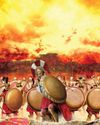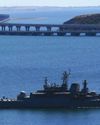Try GOLD - Free
MASTERS OF THE SKIES
History of War
|Issue 152
From rapidly evolving roles to new technologies, historian and airpower expert John Curatola discusses how fighter planes shaped the Second World War
-

When the war broke out, the primary use of fighter planes was air-to-air combat. But by 1940 their role was already evolving to incorporate ground-attack and bomber escort roles. What inspired this change?
Decades before the Second World War, aircraft designs reflected specific kinds of missions. This process started early on in the First World War, with aircraft initially filling reconnaissance and observation roles. Preventing such observation saw the development of pursuit aircraft. Fokkers, Spads, Sopwiths and other pursuit designs came about to fill this mission. Many of these same designs were useful in ground-attack missions. Some dedicated airframes like the Junkers J-1 came about specifically designed to strike enemy ground formations.
During the interwar years, many airpower advocates focused on strategic bombers capable of destroying an enemy's war-making capabilities and terrorising civilians. However, some argued that pursuit aviation had just as much relevance and that balanced air fleets were required. Still others saw military aviation serving in the role as 'flying artillery', with its primary function supporting ground combat in what we would today loosely call close air support (CAS).
The Luftwaffe and Soviet Air Forces largely embraced CAS missions and took lessons from the Spanish Civil War. The Battle of Britain illustrated their strategic airpower limitations in both doctrine and equipment, but in their initial offensives into Poland and France, the iconic use of the Junkers Ju 87 'Stuka' reflected this focus on air-ground cooperation. Blitzkrieg attacks included use of the German bomber force with He 111s, Ju 88s and Do 17s hitting largely operational-level targets like transportation nodes and bases.

This story is from the Issue 152 edition of History of War.
Subscribe to Magzter GOLD to access thousands of curated premium stories, and 10,000+ magazines and newspapers.
Already a subscriber? Sign In
MORE STORIES FROM History of War

History of War
BATTLE FOR THE CHANNEL ISLANDS
In 1945, the Allies were ready with a daring amphibious operation to liberate Jersey and Guernsey by force
8 mins
Issue 152

History of War
THE BOYNE
Three crowns were on the line when two kings met in Ireland on a sweltering summer's day
11 mins
Issue 152

History of War
PARIS DAVIS
This pioneering member of the United States Army Special Forces received long-overdue recognition for his heroism rescuing comrades during the Vietnam War
6 mins
Issue 152

History of War
FALL OF THE SPARTANS
The powerful Greek city-state overreached itself and saw its influence decline as it failed to integrate conquered territories
4 mins
Issue 152

History of War
MASTERS OF THE SKIES
From rapidly evolving roles to new technologies, historian and airpower expert John Curatola discusses how fighter planes shaped the Second World War
9 mins
Issue 152

History of War
TEA WITH TRAITORS
A progressive educator celebrated her birthday with a tea party for dissident friends – unaware that a Gestapo informant was among them
9 mins
Issue 152

History of War
CHURCHILL IN THE TRENCHES
How Britain's future war leader earned respect and redemption on the Western Front
13 mins
Issue 152

History of War
"MORE DANGEROUS THAN THE 1950S"
Do we need to relearn the Cold War's fear of mutually assured destruction in our unregulated nuclear landscape?
3 mins
Issue 152

History of War
CRIMEA IN THE CROSSHAIRS
The Black Sea peninsular has been coveted by rival interests for centuries, with the current Russian occupation motivated by several factors
5 mins
Issue 152

History of War
ON THE BRINK
Any conflict between the US and China would almost certainly see the American mainland come under direct attack
3 mins
Issue 152
Listen
Translate
Change font size
